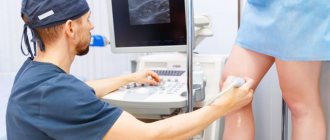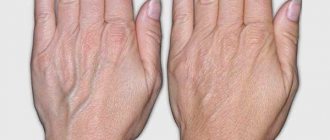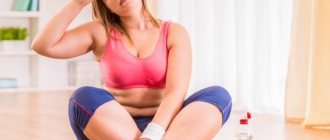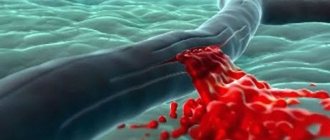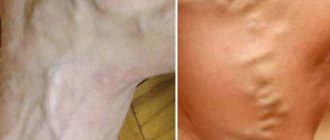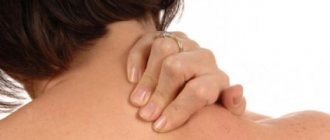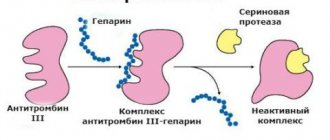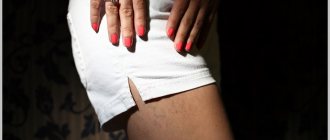Causes
The reasons for the protrusion of veins in the arms are divided into physiological and pathological. Factors that are not associated with the underlying disease:
- hereditary predisposition (weakness of venous valves);
- thin skin;
- thin physique;
- frequent physical activity;
- incorrect posture during sleep;
- climatic conditions (heat);
- age-related changes in venous tone and valve functionality;
- hormonal changes (pregnancy, menopause);
- the use of certain medications (contraceptives, which lead to hormonal disorders).
Sometimes it is impossible to determine the etiology of the pathological process. But in most cases, in men it is associated with physical stress, and in women – with hormonal changes.
Pathological factors include:
- vascular diseases;
- operations on the mammary glands;
- thrombosis;
- phlebitis;
- arterial hypertension;
- the presence of a tumor that compresses the blood outflow tract;
- purulent-inflammatory damage to soft tissues, joints or skin.
Why are veins visible on the arms and how to remove them?
Those who paid attention to the hands of singer Madonna, film actress Angelina Jolie and TV presenter Yulia Vysotskaya must have noticed how visible the veins in their hands are! Is it really not possible to remove them somehow? After all, celebrities have a lot of opportunities to look perfect!
Is it necessary to do this? We’ll talk about this on the women’s website “Beautiful and Successful”.
Why are veins visible on my arms?
As many women age, the veins in their arms are clearly visible, and this is due to physiological changes in the body. But why do veins sometimes appear on the arms of young women? What is this connected with?
Let's look at the main reasons why some women have very visible veins on their arms.
Physiological features
The appearance of noticeable blue veins on the hands may be associated with physiological characteristics of the body.
- As you know, with age, the skin becomes thinner and loses its elasticity. This is due to the fact that there are no sebaceous glands on the hands. Over the years, thinning of the subcutaneous adipose tissue is observed. That is, the fat layer in which the veins were previously hidden becomes thinner, and the veins protrude outward. If veins become visible on your hands with age and do not hurt, you should not be afraid of this - this is a natural process of skin aging.
- Also, the appearance of bulging veins may depend on the hereditary characteristics of the skin structure. Thus, veins can be noticeable on the arms of thin people with thin skin. They shine through the thin top layer and become visible on the surface of the brush. This is often due to genetic features of the structure of the skin: if your mother has noticeable veins on her arms, then you will most likely have this feature.
- Veins are also very visible on the hands of “wiry” people. If this is not so scary for men, then women often suffer from the fact that they have visible veins on their arms, and they don’t know what to do about it.
- Veins may appear on the skin in hot weather. From the heat, blood vessels begin to dilate, blood circulates faster, and veins begin to swell. In cold weather, veins may not appear as clearly on the skin.
Varicose veins
As we know, venous blood circulates upward. Our hands are almost always down. If the walls of blood vessels are weak, blood circulation is disrupted and stagnation may occur. At the site of stagnation, a blockage forms, blood circulates poorly in this place, and the veins begin to appear under the skin and swell.
If bulging veins begin to hurt, you should definitely see a doctor.
Although varicose veins on the arms are much less common than varicose veins on the legs, there are still known cases of this disease in the arms.
Therefore, if, in addition to their unfavorable appearance, the veins in the hands cause pain, sympaty.net advises showing your hands to a phlebologist to rule out varicose veins.
Physiological stress
Veins in the arms can appear in women from physical activity: from lifting weights, carrying heavy bags, working in the garden, cleaning the house, caring for pets, etc. Physical activity on the arms worsens the nutrition of the subcutaneous fat layer, causing This causes the veins to swell and become visible on the arms.
There are many folds on our hands. They appear from systematic compression of the hand. The hand is constantly working - the fold deepens, becomes deeper and forms its own mark.
More than one such folds form on the hands. They necessarily intersect with each other, forming many “webs”. Such “webs” on the hands also cross the joints and veins that permeate our hands.
We continue to grab, squeeze, carry, lift -
the folds become deeper and begin to compress the muscles. The muscle becomes twisted, the nutrition of the subcutaneous fat layer is disrupted, the skin on the hands becomes dry, and the outflow and inflow of blood is disrupted.
The result is hands dotted with intertwined veins. As you can see, most often bulging veins on the arms of women are a cosmetic defect, and not some kind of disease. Therefore, it is not necessary to undergo arm surgery to remove veins on the arms that are very visible.
Experts advise resorting to extreme measures only if the bulging veins in the arms are caused by the problem of varicose veins.
How to remove bulging veins on the arms?
The best way to remove veins on the arms that are very visible is to prevent them from appearing. Therefore, starting from the age of 30, it is important not only to systematically care for your hands, not forgetting about their hydration and nutrition, but also to perform simple preventive measures.
These exercises should help remove small veins that have already appeared on the arms without resorting to surgery.
Loading…
Set of exercises
So, the set of exercises is aimed primarily at preventing deep folds from appearing on the arms, which can tighten the vein.
To do this, you need to very often perform any exercises (do finger exercises) that will stretch the space between the fingers.
The great thing is that you can do these exercises anywhere - on public transport, in queues, just walking down the street, etc.
- Swing all phalanges of your fingers. Something like how we do “Magpie-Crow” for little children.
- Bend and swing all the creases in your arms and hands.
- Spread your fingers out to the sides.
- Walk your fingers along the surface of the table.
- It is also necessary to perform exercises with raised arms daily to improve blood circulation.
That is, try to do all the exercises that will force your fingers and hands to move to prevent the formation of deep folds and folds.
Sometimes, when performing these exercises, pain may occur, but then the pain recedes into the background and the condition of the hands improves - they become smooth, and the veins on the hands are not so visible.
Hand massage
Don't forget about hand massage. Massaging your hands will help remove muscle creases and remove folds on your hands - you will make room for the formation of subcutaneous tissue. Work with your hands a little every day.
Hirudotherapy
Very good reviews about the treatment of bulging veins can be found about hirudotherapy - treatment with leeches. The enzyme contained in leeches has a beneficial effect on the walls of blood vessels and helps improve the elasticity of blood vessels.
Therefore, several sessions of hirudotherapy can be an effective method for those who have very visible veins on their arms.
Surgical methods for treating bulging veins in the arms
Often the veins on women's arms are so visible that exercises and massages alone are not enough to improve their condition. Patients who seek help from specialists complain that their arms with bulging veins look old and unkempt, so they want to remove the bulging veins.
Experts today practice several methods on how to remove bulging veins on the arms... This can be done in several ways.
Laser treatment
The laser beam glues the walls of blood vessels, and blood stops moving through the veins. Naturally, the vein disappears and is not visible on the arm.
Sclerotherapy
The essence of this method is identical to the treatment of veins with a laser - to turn off the bulging vein from the blood circulation. To do this, special preparations in the form of foam or liquid are injected into the vein, which glue the walls of the vessels, and the vein fails.
By the way, we rarely perform sclerotherapy on our hands. Everything is connected with the peculiarities of this operation in the area of the hand. If you perform this operation incorrectly, you will only get a nagging pain throughout your entire arm, and will not remove the bulge.
Abroad, a special type of banding is performed to prevent thrombosis.
Miniphlebectomy
This is an operation to remove a bulging vein in the arms. Protruding veins are removed through special punctures with an instrument.
It is very important to remember that with any surgical intervention the veins become unsuitable for intravenous injections. They are simply removed from the blood supply.
Drug treatment
There are many drugs that affect the walls of veins. They are taken to improve their elasticity and permeability. Here are some reviews we found about how to treat very noticeable veins on the arms.
- I strengthen the walls of blood vessels with chestnut preparations (escusan), and also drink mumiyo. I rub my veins with it. Don't forget about the contrast shower for your hands. Hope.
- Mommy took Phlebodia 600. It became much better. Olya.
- I drink nutmeg tincture. Pauline.
- Heparin ointment helps me. I apply it to my hands to prevent the veins from swelling. Julia.
- Having tried all the folk crap, including birch buds, I bought Varicobooster cream. The veins became almost invisible already on the 5th day. Ksyusha.
- For prevention, preparations with lily of the valley, horse chestnut, mistletoe, and vitamin R are suitable. Gennady.
Do not forget that doctors categorically do not recommend prescribing medications for bulging veins on your arms.
Before you start removing swollen veins on your arms, you need to find out why the veins have become very visible on your arms. It may be enough to reduce physical activity on your arms, limit heavy lifting and do a set of special exercises.
Whether it is necessary to remove bulging veins in the arms using surgical methods, only a doctor should decide! If bulging veins on the arms threatened human health, then our celebrities would have gotten rid of this problem long ago. Therefore, most often the veins that are visible on the hands cause only aesthetic inconvenience, but do not threaten a woman’s health.
—Author – Yulia Spiridonova, website www.sympaty.net – Beautiful and Successful
Copying this article is prohibited!
Source: https://www.sympaty.net/20160401/vidny-veny-na-rukax/
Symptoms
The clinical picture depends on the factors that caused the development of the pathological process.
In older people, this is due to age-related changes.
Swollen veins in the arms are mainly accompanied by the following symptoms:
- feeling of fullness;
- soreness;
- numbness;
- burning;
- tingling;
- dry skin, itching and flaking;
- change in skin color in the affected areas;
- stiffness of movements;
- feeling of weakness in the hands.
Signs may appear in varying degrees of severity.
Diagnostic methods
If a vein in the arms is swollen, a person should consult a doctor. For diagnosis, ultrasound with Doppler sonography is performed first. This effective method helps determine the size of blood vessels, their patency, blood flow speed, valve functionality, and the presence of blood clots.
Additionally, other methods can be used:
- venography (with the introduction of contrast);
- MRI;
- clinical blood tests.
How to remove veins on women’s arms using folk remedies
Is it necessary to do this? We’ll talk about this on the women’s website “Beautiful and Successful”.
Surgical methods for treating bulging veins in the arms
Experts today practice several methods on how to remove bulging veins on the arms. This can be done in several ways.
Treatment of veins with folk remedies
Treatment of veins with folk remedies
Rubbing
Rubbing from Antonovka
- Rubbing from Antonovka helps very well. Finely chop one kilogram of Antonov apples and pour a liter of boiling water. After two hours, mash the apples in the infusion until a liquid puree forms. Rub the mixture in gently once daily.
- If you rub your veins with apple cider vinegar every morning and evening, you will notice that they gradually begin to disappear.
- Rosemary oil, or any oil containing vitamin E, works well if rubbed into the veins daily.
- For rubbing, prepare an alcoholic infusion of white acacia flowers. Take one part flowers and three parts alcohol. Leave it for a week and the rub is ready.
- For three months, folk healers promise noticeable relief if you rub Kalanchoe tincture from bottom to top twice a day. Grind the leaves of the plant, pour vodka and place in a closet for ten days.
Calendula ointment
- Summer is a great time to prepare a wonderful calendula ointment. Pick the flowers along with the leaves and stems. Finely chop them and combine with the same volume of lard, previously melted. After a day, heat the mixture, strain and pour into a glass container. Rub calendula ointment on sore veins every day.
- Cucumber ointment can also only be made in summer, as it is prepared from overripe cucumbers. Leave one cucumber in the garden until it turns green-brown. Pick it, wash it thoroughly and grate it. Place the cucumber puree in a glass jar and fill it with kerosene until it completely covers it. Screw the lid on tightly and bury it in the ground for ten days. When you dig up the jar, you will see in it an oily mixture that relieves pain well and reduces bloating of the veins if you rub it on the sore areas every day.
Compresses for varicose veins
Baths
Baths with herbal infusions
- Baths with herbal infusions are useful. Brew one hundred grams of marsh cudweed with five liters of boiling water and leave for ten hours. Heat the infusion to 35 degrees and immerse your feet in it for half an hour.
- Blood circulation is normalized if you take baths with a decoction of grape leaves every day for three months. 50 grams of grape leaf should be infused in three liters of boiling water, cooled to a comfortable temperature and used for a foot bath.
- For baths for venous problems, you can use clover, chamomile, willow bark and oak bark, young pine branches and hop cones. Make decoctions from them, combine and alternate them. But there is one obligatory condition: after the foot bath, you need to lie down for one hour, placing your feet at a level just above your head. And it’s best to take them in the evening and immediately go to bed, placing one or two pillows under your feet.
Self-massage
- Place your palms around your shins and start stroking from your ankles to your knees. Repeat ten times.
- Rub the shins of both legs in a circular motion from bottom to top. 10 times.
- Stroke the shin forcefully as if trying to push the blood upward.
- Grab your shin with your palms.
Knead the muscles from bottom to top with movements reminiscent of those made when kneading dough. Five times. - Finish the massage of the legs with light strokes and move on to the thighs using the same techniques.
For massage, you can use an ointment purchased at a pharmacy or one of those whose recipes we gave above.
After completing the procedure, rest for five minutes with your legs elevated.
Prevention
- Wear shoes with heels no higher than five centimeters. It is better to avoid flat soles.
- Tight underwear and clothes are not your option.
- Make it a habit to massage your feet every day.
- Don't spend a lot of time in the sun.
- Drink at least one and a half liters of water per day.
- Eat right. Less fat. More greens, vegetables and fruits. Only dietary meat - chicken or turkey breast. Beef liver and seafood are healthy. Eggs – no more than three per week.
Therapy
It is possible to determine how to remove veins in the arms only after a full diagnosis. Taking into account its results, the doctor prescribes medications, sclerotherapy, physiotherapeutic procedures, useful exercises, and surgery.
Medication
For minor manifestations of pathology, external agents are prescribed that help strengthen venous tone:
Lyoton gel Troxevasin gel Venitan (gel)
In case of severe manifestations, the use of tablets is added to such drugs. They help increase the strength of vessel walls, restore microcirculation and blood outflow. Effective tablets:
Phlebodia 600 Escin Antistax (capsules)
In the presence of thrombophlebitis, the use of anti-inflammatory drugs and antibiotics is additionally prescribed.
Surgical intervention
Surgical treatment methods are used for acute circulatory disorders associated with blockage of blood vessels. In such cases, the patient experiences swelling and redness of the skin, fever, and suppuration.
This method of treatment is used mainly for thrombophlebitis, the consequences of prolonged intravenous injections. Laser therapy is considered effective.
Treatment with folk remedies
Folk remedies are used only in combination with medications. Such therapy cannot be the main one due to lack of effectiveness. For internal and external use, it is recommended to use herbs with a venotonic effect:
- horse chestnut;
- nutmeg;
- verbena.
Plants that help thin the blood:
- Golden mustache;
- willow bark and leaves;
- raspberry leaves;
- sweet clover;
- peony flowers.
Herbs with decongestant action:
- knotweed;
- horsetail;
- dandelion.
Such remedies are effective in the initial stage of development of the pathological process and will help get rid of veins on the arms. Only they are effective in combination with medications.
Manifestations and diagnosis of bloating of veins
Recognizing varicose veins is usually not difficult. A specialist can accurately determine the presence of pathology even simply by the appearance of the patient’s hands. A positive diagnosis will be made if the following signs of the disease are present:
- The vessels in the hands increase in size and protrude greatly;
- Swelling of the upper extremities is observed;
- It becomes difficult for the patient to move his fingers intensively and quickly;
- The patient complains of a feeling of heaviness and pain in the area of swelling;
- Fingers often go numb;
- During sleep, the patient experiences increased discomfort, which is caused by disruptions in blood flow and blockage of blood vessels in the upper extremities. This gives rise to the desire to “raise your hands up,” as it were.
When vasodilation occurs against the background of certain chronic diseases (dental problems, diseases of the reproductive system, etc.), additional symptoms are observed, which include:
- Skin thickening;
- Severe pain;
- Swollen hand skin;
- Temperature increase.
Along with the above, a form of inflammation such as the formation of a blood clot under a vein is also possible. This disease is dangerous for people suffering from cardiovascular diseases (those who have previously had them are no exception). Pregnant women are also at risk - the pathology can lead to complications during childbirth.
The general characteristic of having a blood clot is that it becomes more difficult for a person to endure many illnesses and injuries, and the overall flow of blood may be disrupted.
Another disease associated with varicose veins is migratory thrombophlebitis, in which, in addition to swelling of the veins, spots appear, mostly brown. It occurs mainly in men.
This pathology consists in the fact that blood does not flow to the necessary tissues, and the structure of the blood circulation as a whole is disrupted. The following signs are typical for diagnosing this disease:
- When you raise your arms, the condition of the veins on them does not improve (the vessels still remain compacted);
- The arm susceptible to pathology is slightly longer than the other;
- Possible formation of ulcers on the skin of the affected limbs;
- In areas where the disease is localized, tissue vibration is observed.
We should also not forget that only a phlebologist can conduct the most complete and detailed examination of the patient. Then, if he has such signs, make a final diagnosis and prescribe therapy.
There are several methods to get rid of varicose veins. Let's consider the most relevant of them. So, the most common methods of treating varicose veins are:
1. Drug treatment. With the help of various drugs, you can improve the condition of the veins, give them elasticity and get rid of the unaesthetic disease. The following medications are considered effective:
- Aescusan, Varicobooster - creams and ointments for external use (rubbing the affected areas of the hands with varicose veins);
- Phlebodia is a drug for oral administration;
- Along with medicines, traditional medicine is also widely used. This includes preparations containing mumiyo, as well as those made from lily of the valley, chestnut and other medicinal plants.
However, you should choose medications based on the doctor’s prescription, and not treat yourself: varicose veins are characterized by individual manifestations, so medications and dosage are selected specifically for each patient.
2. Surgical intervention. Protruding veins can sometimes become a big problem. This happens, for example, in cases where the vessels are so visible that standard treatment methods do not help to at least reduce such manifestations to a minimum.
And, accordingly, to give the skin of their hands a more aesthetic appearance, many patients decide to undergo surgical intervention. The following operations to remove bulging veins are usually used:
Physical exercise
What to do if a vein in your arm becomes inflamed will be determined by your doctor after a full diagnosis. In order to normalize blood circulation, it is recommended to perform therapeutic exercises.
It consists solely of stretching:
- stretch your arms forward, pull your palms up and then down;
- fingers gradually form a fist on each hand, then open them back in the same order;
- fold your hands as before prayer at chest level and in this position raise them up.
Each manipulation should be performed slowly until your hands begin to get tired. During the day, you can make circular movements with your hands and bend your elbow joints.
If varicose veins are observed, then it is forbidden to visit the gym (perform exercises with a barbell, weights, push-ups).
Superficial and deep veins of the upper limb, their anatomy, topography, anastomoses
There are superficial and deep veins of the upper limb.
They are connected to each other by a large number of anastomoses and have numerous valves. The superficial (saphenous) veins (Fig. 70) are more developed than the deep ones (especially on the back of the hand).
The main venous pathways of the skin and subcutaneous tissue begin from them - the lateral and medial saphenous veins of the hand, which receive blood from the venous plexus of the dorsum of the fingers.
Superficial veins of the upper limb. Dorsal metacarpal veins'vv. metacarpales dorsdles
(4), and the anastomoses between them form the dorsal venous network of the hand,
rete venosum dorsdle mdnus, on the dorsal surface of the fingers, metacarpus and wrist.
On the palmar surface of the hand, the superficial veins are thinner than the dorsal ones. They begin with a plexus on the fingers, in which the palmar digital veins, vv. digi-tdles palmdres.
Through numerous anastomoses, located mainly on the lateral edges of the fingers, blood flows into the dorsal venous network of the hand.
The superficial veins of the forearm, into which the veins of the hand continue, form a plexus. The lateral and medial saphenous veins of the arm are clearly visible in it.
Lateral saphenous vein of the arm, v. cephdlica}
starts from the radial part of the venous network of the dorsal surface of the hand, being, as it were, a continuation
of the first dorsal metacarpal vein, v.
metacarpalls dorsalls I. It follows from the dorsum of the hand to the anterior surface of the radial edge of the forearm, along the way it receives numerous cutaneous veins of the forearm and, enlarging, goes to the ulnar fossa. Here, the lateral saphenous vein of the arm anastomoses through the intermediate vein of the elbow with the medial saphenous vein of the arm.
It continues to the shoulder in the lateral groove of the biceps brachii muscle, then in the groove between the deltoid and pectoralis major muscles, pierces the fascia and flows under the clavicle into the axillary vein.
Medial saphenous vein of the arm, v. basilica*,
is a continuation of the fourth
metacarpa-lls dorsalis IV, passes from the dorsum of the hand to the ulnar side of the anterior surface of the forearm and follows towards the cubital fossa, where it receives the intermediate vein of the elbow.
Next, the medial saphenous vein rises along the medial groove of the biceps brachii muscle to the shoulder, at the border of its lower and middle thirds it pierces the fascia and flows into one of the brachial veins.
Intermediate vein of the elbow, v. Intermedia [mediana] cubiti,
has no valves and is located under the skin in the anterior ulnar area. It passes obliquely from the lateral saphenous vein of the arm to the medial saphenous vein of the arm, also anastomosing with the deep veins.
Often, in addition to the lateral and medial saphenous veins, the intermediate vein of the forearm, v. intermedia [mediana] antebrachll.
In the anterior ulnar region, it flows into the intermediate vein of the elbow or is divided into two branches, which independently flow into the lateral and medial saphenous veins of the arm.
Deep veins of the upper limb. The deep (paired) veins of the palmar surface of the hand accompany the arteries and form superficial and deep venous arches.
The palmar digital veins drain into the superficial palmar venous arch, arcus venosus palmaris superficialis,
located near the arterial surface of the palmar arch.
Paired palmar
metacarpales palmares, directed to the deep palmar venous arch, arcus venosus palmaris profundus.
The deep as well as the superficial palmar venous arches continue into the deep veins of the forearm - paired
ulnar and radial veins, vv.
ulnares et vv. radiates, which accompany the arteries of the same name.
Formed from the deep veins of the forearm, two brachial veins, and " brachl-ales,
not reaching the axillary cavity, at the level of the lower edge of the tendon of the latissimus dorsi muscle merge into one trunk - the
axillary vein, v.
axllldrls. This vein continues to the lateral edge of the first rib, where it passes into the subclavian vein, and.
subcldvia.
The axillary vein, like its tributaries, has valves;
it is adjacent to the anteromedial semicircle of the axillary artery and collects blood from the superficial and deep veins of the upper limb. Its tributaries correspond to the branches of the axillary artery. The most significant tributaries of the axillary vein are the lateral thoracic vein, v.
thordcica laterdlis, into which the thoraco-epigastric veins flow, vv. thoracoepigdstricae,
anastomosing with the inferior epigastric vein - a tributary of the external iliac vein.
The lateral thoracic vein
also receives thin veins that connect with the I-VII
posterior intercostal veins.
The venous vessels flow into the thoracogastric veins and emerge from the areola venous plexus, plexus venosus areoldris,
formed by the saphenous veins of the mammary gland.
Didn't find what you were looking for? Use the search:
Source: //studopedia.ru/17_73932_poverhnostnie-i-glubokie-veni-verhney-konechnosti-ih-anatomiya-topografiya-anastomozi.html
Physiotherapy
In addition to the main treatment, procedures are recommended.
- Electrophoresis. Special massage using electrical discharges and the introduction of venotonic drugs. Helps increase vascular tone, improves blood flow.
- Magnetotherapy. Aimed at reducing swelling and inflammation.
- Compression. They put a special sleeve on the arm and let air under it. Under this effect, tissues are compressed, blood flow and lymph outflow are improved.
- Hydrotherapy. Consists of contrast baths, hydrogen sulfide and hydrolaser showers.
- Massage using liquid nitrogen.
Characteristic
A vein is an elastic blood vessel that transports blood from various areas of the body to the heart. The venous system has low pressure and needs muscle contraction to move the blood upward. Venous vessels are divided into superficial and deep.
One of the biggest differences between the two is the amount of blood carried. The deep ones are responsible for transporting most of the blood, and the superficial ones, although important, carry a much smaller amount.
The organs of the upper extremities include:
- shoulder girdle;
- free upper limb, consisting of the shoulder, elbow, forearm and hand.
The lower limbs include:
- lower limb belt;
- the free lower limb, which includes the thigh, knee, and foot.
The superficial veins of the upper extremity and lower extremity are located between two layers of tissue called superficial fascia or subcutaneous tissue, and are visible just under the skin.
They receive blood from the venules and then combine into the venous system. Valves play a great role in the movement of blood through the vessels, which occurs due to hydrostatic pressure in various parts of the circulatory system.
They are folds of the inner lining of the vessel.
Their role is to pass blood towards the heart and block its reverse flow, or prevent blood reflux, which they do with the help of 2 leaflets located at the beginning and end of the valve.
Some valves have a 3-leaf system. The vessels of the lower extremities have the largest number of valves. They play a special role at the junction of deep and superficial veins.
Venous vessels also collect blood from the numerous tributaries that flow into them.
| Veins of the lower limb | |||
| Great (long) saphenous vein | Source | Inflow | Stock |
| Medial marginal vein of the foot. |
| Femoral vein. | |
| Small (short) saphenous vein | Popliteal vein. |
| External iliac vein. |
| Veins of the upper limb
| |||
| Forearm |
| ||
| Brush |
| ||
| Hand |
| ||
| Shoulder |
| ||
Superficial veins are not connected to an artery, unlike deep veins, which are located next to the artery of the same name.
Prevention and prognosis
Why the veins in the arms swell can only be determined by a doctor after a full examination. To prevent such pathologies, the following recommendations should be followed:
- avoid overheating the body;
- adjust the daily diet (limit the consumption of foods that retain fluid in the body);
- drink 1.5-2 liters of water per day;
- eat a lot of vegetables and fruits every day;
- to refuse from bad habits;
- avoid frequent physical activity;
- do swimming, yoga.
The pathology generally has a favorable prognosis if you consult a doctor at the first signs of its development. This is influenced by the reason for the appearance of veins on the arms, the age and characteristics of the body of each patient. A specialist will tell you how to get rid of veins on your arms. It is not recommended to self-medicate, especially with folk remedies.
The material was prepared specifically for the website venaprof.ru, edited by clinical pharmacologist K.V. Nedelko.
Prevention
Healthy eating, rest, moderate exercise are the main preventive measures. To prevent the vessels from becoming swollen and painful, and to prevent an aesthetic defect from developing into a serious problem requiring the help of doctors, it is necessary:
- Avoid alcohol and nicotine.
- Reduce the amount of coffee you drink.
- Take a contrast shower every day.
- Do exercises or exercise.
- Eat properly.
When troubleshooting the problem, it is important to follow the doctor’s recommendations. Adhere to the basics of complex therapy. Recovery after surgery takes a lot of effort and time, so it is better to avoid critical situations.
